Author : Building Code Trainer
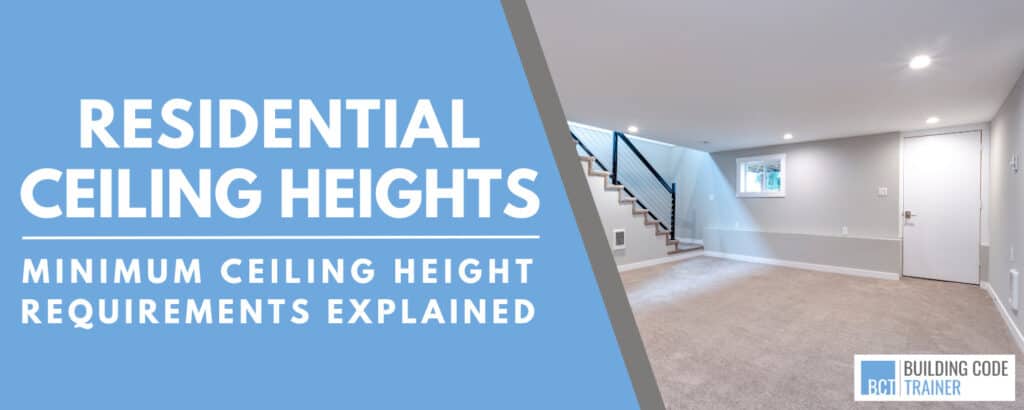
When it comes to determining the minimum ceiling height for a residential dwelling, it can differ depending on the use of the space. The International Residential Code (IRC) establishes the minimum ceiling height requirements by space within Section R305. Lets look at the 2021 International Residential Code (IRC) to see how these minimum height requirements apply.
First off lets break down Section R305 to make it easy to follow. It basically identifies 6 main spaces.
- Habitable Spaces
- Hallways
- Basements (with habitable spaces and hallways)
- Bathrooms
- Laundry Rooms
- Basements (without habitable spaces and hallways)
Minimum Ceiling Height for Habitable Spaces (Section R305.1)
Section R305.1 indicates the minimum ceiling heights for Habitable Spaces, Hallways, Basements with habitable spaces and hallways, Bathrooms, and Laundry Rooms.
Habitable Spaces, Hallways, Basements with habitable spaces and hallways shall have a minimum ceiling height of no less than 7 feet.
Bathroom and Laundry Rooms shall have a minimum ceiling height of no less than 6 feet 8 inches.
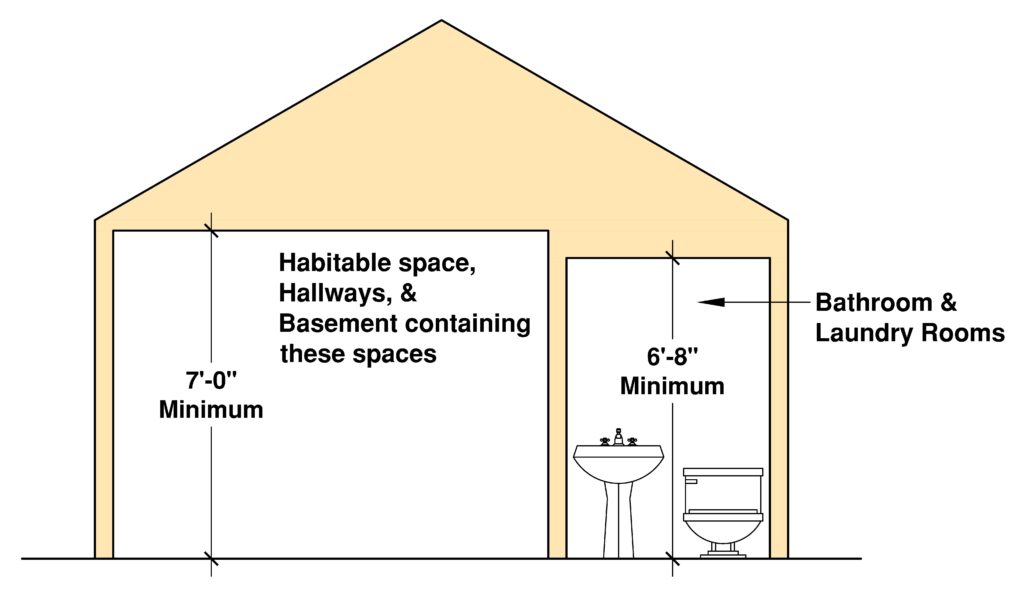
Minimum Ceiling Height for Basements with no Habitable Spaces (Section R305.1.1)
Section R305.1.1 indicates the minimum ceiling height for Basements without habitable spaces and hallways.
Basements without habitable spaces and hallways shall have a minimum ceiling height of no less than 6 feet 8 inches.
Ceiling Height Exceptions
Now for the Exceptions…
Both Section R305.1 and R305.1.1 have exceptions. Section R305.1 has three exceptions and R305.1.1 has one exception.
Exception #1 (Section R305.1):
These measurements are easy to follow if you have a ceiling that is parallel to the floor (flat) but what happens when you have a sloped ceiling (vaulted)? What is the minimum height requirement for vaulted ceilings and how do you measure it?
A room that has a sloped ceiling shall at no point have a ceiling height less than 5 feet and no less than 50% of the floor area shall have a ceiling height less than 7 feet.
So basically it is understood that a room with a sloped ceiling can have a ceiling height less than 7 feet only if at least 50% of the rooms area is not less 7 feet and at no point can any part of the room be less than 5 feet if the room is used as a space as defined above. Below is a graphic to better understand this exception:
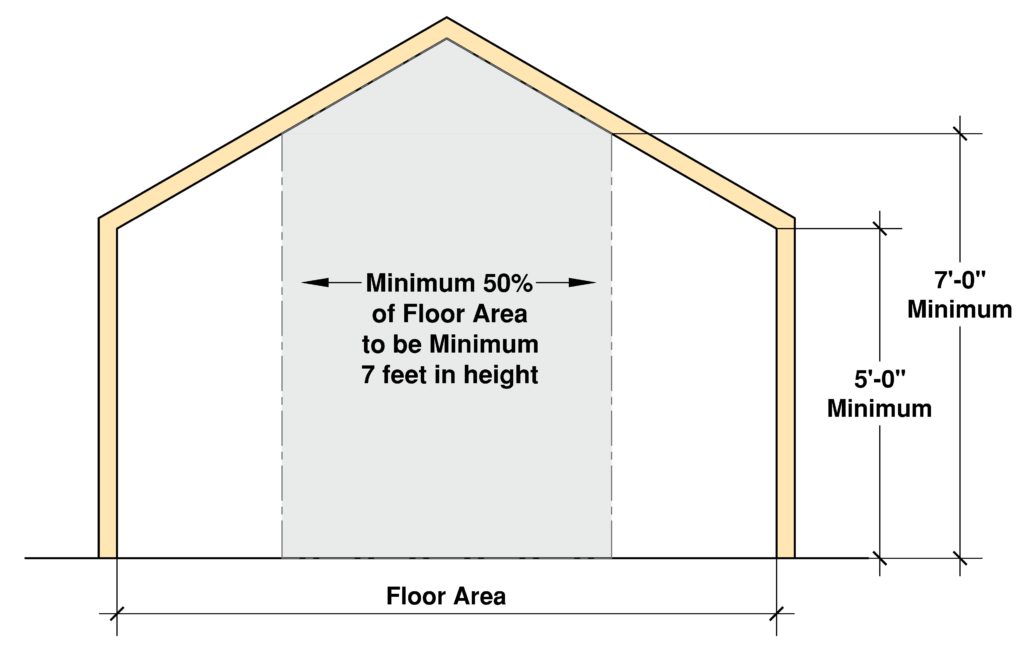
Exception #2 (Section R305.1):
The code understands that fixtures located within bathrooms must be capable of being used for its intended purpose. With that said it identifies that showers and tubs with showerheads must have a 30 inch by 30 inch area that has a ceiling height of no less than 6 feet 8 inches at the showerhead. Below is a graphic to better understand this exception:
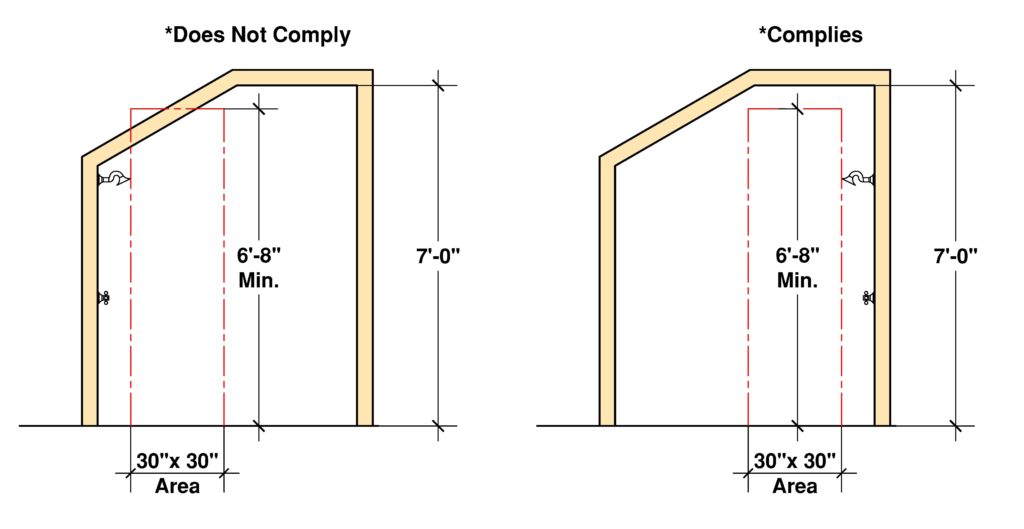
Exception #3 (Section R305.1):
This exception pertains to Basements that contain habitable spaces. Due to some site and structural restrictions, basements tend to have a lot of projections or obstructions such as exposed beams, girders, ducts, etc…
In this case the code allows the minimum ceiling height to these projections to be no less than 6 feet 4 inches from the finished floor. Below is a graphic to better understand this exception:
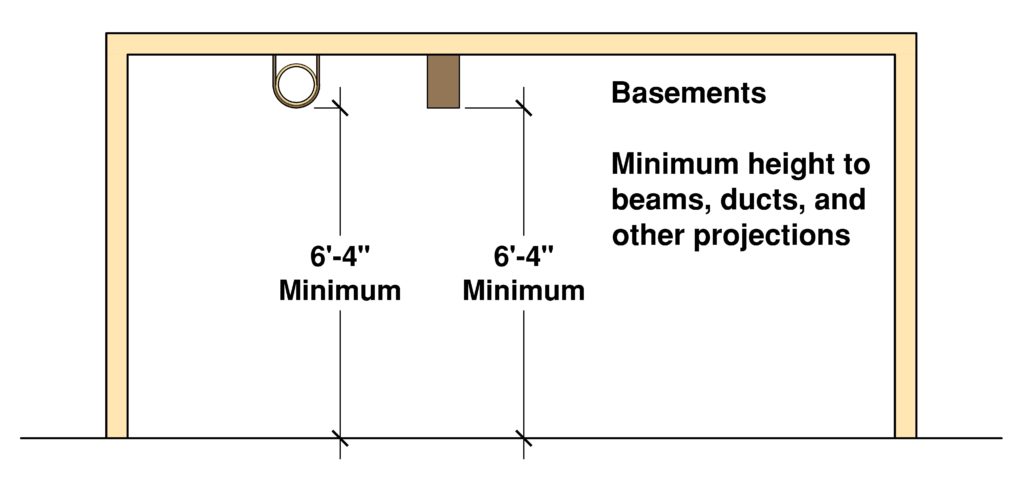
Exception #4 (Section R305.1):
This exception applies to habitable spaces and hallways that have beam or girder projections which are not located within the basement. Exception 3 included these type of projections within basements however did not address beams or girders within habitable spaces other than in basements. As long as the beams or girders are not spaced out less than 36 inches, the minimum clearance can be reduced to 6 feet 6 inches (78 inches).
This is inline with other sections of the code for example Section R311.2 requires a minimum of 78 inches for the height of an egress door. With this in mind, someone making their way through a room, other than a basement, can do so with no different head height clearance as that required for an egress door.
Below is a graphic to better understand this exception:
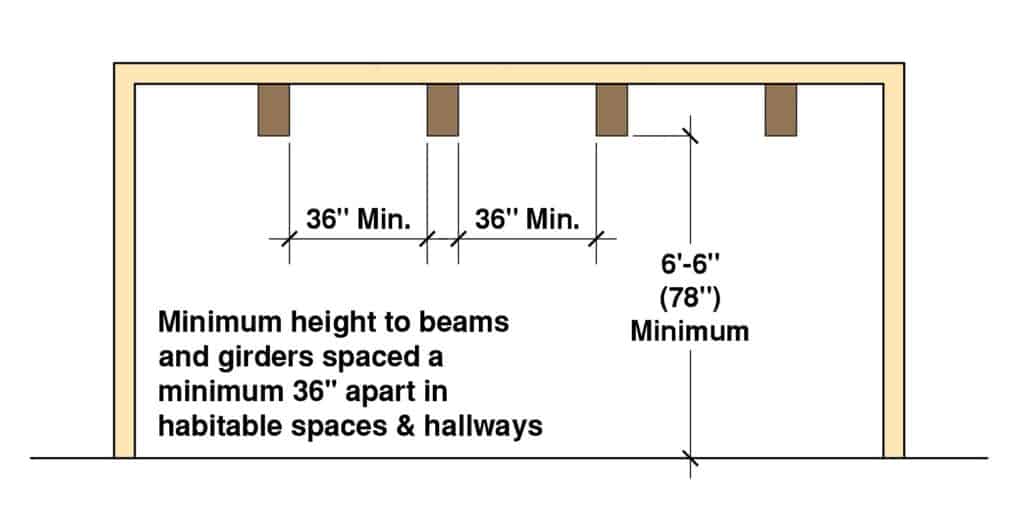
Section R305.1.1 Exception
This section which applies to basements not containing habitable space or hallways has only one exception, and it is the same as exception #3 above.
The minimum ceiling height to beams, girders, ducts or other obstructions shall be no less than 6 feet 4 inches from the finished floor.
Summary of Residential Ceiling Heights
Therefore in summary lets is recap the above information:
- Habitable Spaces, Hallways, Basements with habitable spaces and hallways shall have a minimum ceiling height of no less than 7 feet.
- Bathroom and Laundry Rooms shall have a minimum ceiling height of no less than 6 feet 8 inches.
- Basements without habitable spaces and hallways shall have a minimum ceiling height of no less than 6 feet 8 inches.
- Habitable spaces that have a sloped ceiling shall at no point have a ceiling height less than 5 feet and no less than 50% of the floor area shall have a ceiling height less than 7 feet.
- Showers and tubs with showerheads must have a 30 inch by 30 inch area that has a ceiling height of no less than 6 feet 8 inches at the showerhead.
- The minimum ceiling height to beams, girders, ducts or other obstructions located in basements shall be no less than 6 feet 4 inches from the finished floor.
- The minimum ceiling height to beams and girders within habitable spaces, other that in basements, shall be no less than 6 feet 6 inches from the finished floor.
About the Author

Building Code Trainer
AuthorThis site is run and maintained by a Certified Building Official, Plans Examiner, and Inspector. With a Bachelors of Science Degree in Construction Engineering along with holding multiple ICC certifications, the Author of this site has over 15 years of experience within the construction industry.
___
